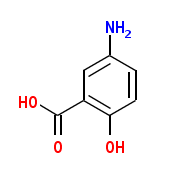A regimen of prescription pills may explain the highest blood concentration of a phthalate ever observed, medical researchers say. Phthalates are used as solvents, in plastics formulations, and for other purposes.
Last year, Russ Hauser of the Harvard School of Public Health in Boston and his colleagues found that men with high exposures to certain phthalates are likely to have sperm abnormalities (SN: 5/31/08, p. 339).
Phthalates are common in people's urine, but how these chemicals get into the body has remained unclear. Contact with phthalate-containing plastics and cosmetics is one likely path of exposure. Oral medications, which are sometimes coated with phthalates to control when the pills dissolve, could be another.
One volunteer in Hauser's study had a concentration of mono-butyl phthalate in his urine several hundred times higher than average in the United States. In a report in an upcoming Environmental Health Perspectives, Hauser and his team suggest that the man's primary exposure to the phthalate was from a drug, Asacol, that he had been taking 12 times daily for ulcerative colitis.
Asacol's coating contains dibutyl phthalate, which the body converts into mono butyl phthalate, but not three other phthalates the researchers studied. These three chemicals showed up in unremarkable concentrations in the patient's urine. Longterm use of phthalate-coated pills may be an underrated route of phthalate exposure, the researchers suggest.--B.H.
COPYRIGHT 2004 Science Service, Inc.
COPYRIGHT 2004 Gale Group



